How to print text messages for use as evidence

In the event of a dispute, insurance claim, trial or legal matter, it can be important to document or print text messages, to show that they were sent, received, or read at a particular time. Evidence from texts can be critical in trials, and is often sought during discovery. This evidence is equally handy in commercial or contractual disputes between businesses, or between consumers and online sellers.
What's important when printing text messages?
Standards of acceptability vary around the world. For example, in Massachusetts, displaying a name on text messages isn’t enough to prove their validity without “confirming circumstances” that would “allow a reasonable fact-finder to conclude that this evidence is what its proponent claims it to be [...and that...] neither expert testimony nor exclusive access is necessary to authenticate the source”. As such, it's important to get it right.
Common-sense presentation of messages as evidence suggests that you need to make sure you have the following:
- A clear record of time and dates in an unambiguous format, with information on which timezone the messages were in, and whether daylight saving time affects some or all of the timestamps
- The date and time was received and read, if available (although many messaging systems don't preserve this data, see below)
- Accurate representations of attachments and special characters, such as emoji, drawings, locations and memoji
- Clear details of the message's sender and or recipient(s), not just an alias
- Presented in a tamper-proof way that is hard to alter or fake
How to prove a message was read — or received
Proving whether a message was received can be difficult, depending on the messaging system being used. SMS systems weren’t designed for effectively tracking whether a message was delivered or not, and the “read receipt” mechanism relies on both the sender and the receiver opting in ahead of time.
Some networks implement their own delivery tracking reporting. For instance, in the UK most networks let users confirm delivery of text messages if they add *0# to the start of the message. Of course, this isn’t helpful if you’ve already sent the message, and it will only tell you if the network has delivered the message — which isn’t actually the same thing as the recipient's cell phone successfully receiving it. (This method will result in the sender being sent a text message by their network confirming delivery of their text.)
Seeing these weaknesses in the SMS network, both Apple and Google have built their own extensions to delivery and sending tracking. Third-party apps which handle message -- such as WhatsApp and Facebook Messenger — have also built their own tracking mechanisms, and we’ll look at these below.
There are several distinct steps in the messaging process that most systems use, and it’s helpful to look in more detail at what information is recorded, and where. For brevity, we’re abbreviating some of these steps in the summary below:
- Sender clicks send on the message
- Sender’s device successfully transfers the message to their network
- Sender’s network successfully distributes it to the receiver's device
- Receiver’s device successfully store the message and alerts the receiver to it
- Receiver reads the message
If you have access to the receiver’s data — for instance, you’re a law enforcement officer who has executed a warrant to secure a device — then it’s possible to get data on whether or not a message has been read with the tips below. Otherwise, if you only have access to the sender’s data, the following applies:
| System | Sent data | Delivered by network | Read by recipient |
|---|---|---|---|
| SMS | Yes | No | Only if receipts requested ahead of time by sender, enabled by recipient, and the receipt message was kept |
| iMessage | Yes | No | If iMessage read receipts enabled by recipient |
| RCS / joyn via Android Messages | Yes | Yes | If enabled by recipient |
Options for preserving a phone’s message history
Let’s take a look at the best ways to preserve text messages for use as proof.
Using screenshots from a phone
The simplest approach is to take a screenshot or photograph of your device displaying the texts. This is pretty simple: on an iPhone you’d hold down the home button and tap the power button, or on an iPhone without a home button you’d hold “volume up” and tap the power button. That screenshot can then be printed or emailed.
Screenshots aren’t suitable as robust forms of evidence. They have many problems:
- They can be easily faked. A screenshot is just a picture: anyone can draw a picture and put some text on it.
- It may take many screenshots to adequately show a complete messaging history, and there’s no clarity as to whether there are gaps between those screenshots.
- Messaging apps don’t show explicit timezone or daylight saving (DST) information.
- Messaging apps tend to obscure dates. Your phone might say a message was sent “yesterday”. That’s not helpful if you print it out and show it to someone a week later!
- Messaging apps tend to group messages together. If you send several iMessages close together, your iPhone will only show you when the first one was sent.
By way of example, here’s a screenshot simple message thread from an iPhone:
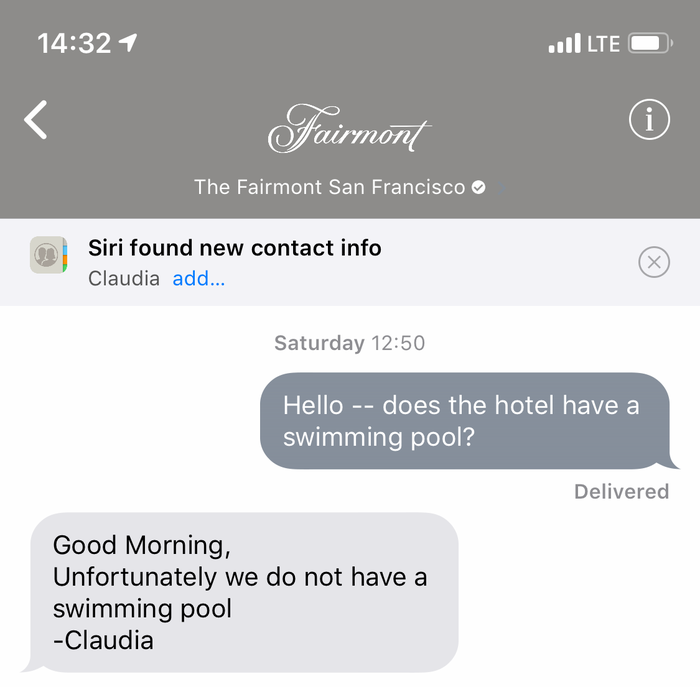
You can see “Claudia” replied to a message. But what number did she reply from? And when did she reply? Was the message sent at 12:50 am on Saturday, or at 12:50 pm? Is that in daylight saving hours, in a local time zone, or is it in UTC? None of these questions are answered by that screenshot — it only raises more questions.
Using a phone or messaging app to print messages directly
As well as being ineffective, it’s surprisingly difficult to print messages directly from most phones. For instance, an iPhone can’t do it. If you pair your iPhone with your Mac through your iCloud account and let them sync messages, you’ll be able to see your SMS and iMessage history in the Mac’s Messages app. You can read how to use Messages here, directly from Apple.
Saving data from the Messages app is less effective than using a screenshot from an iPhone or iPad: it has all of the same drawbacks that screenshots have — and more.
Here’s the same question thread from above, but shown on a Mac’s Messages app this time:
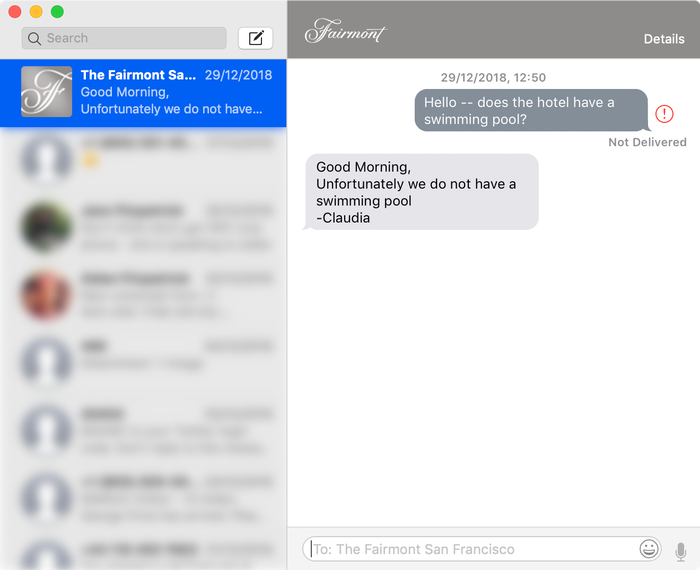
This report shows many of the same problems. 12:50 am or pm? Which timezone? When did Claudia reply?
Different message types aren’t indicated. For instance, your phone will show the difference between SMS, MMS and iMessage by using different colours, but the Messages app will show them all as being grey, and won’t always include every SMS message in a text conversation.
Printing data from Messages introduces another problem: the date is shown as “29/12/2018”. If that date was shown as “5/12/2018”, it wouldn’t be possible to tell whether it was in European format (5th December) or US (12th May). Most American users would assume the message was seven months older than it appeared to be. An unambiguous format to use would be "2018-12-29”.
There’s another, more obvious problem. My sent message has a red exclamation mark and “Not delivered” written next to it. This is obviously not the case: after all, Claudia replied. But that’s what the Messages data tells us. It’s completely incorrect, would be highly misleading as evidence, and points to the real truth that neither method has shown: I sent two messages, the first of which failed to send, and the second of which works. Knowing this raises more questions.
Print text messages from a phone network provider
Some mobile networks provide online tools for viewing message histories from the network’s side, but these are incomplete, at best. Verizon have a “View Texts Messages” service for US subscribers, but it only includes a small amount of data, and doesn’t have attachments, rich media, deletion status, read time, and it has all the same pitfalls with missing and ambiguous dates.
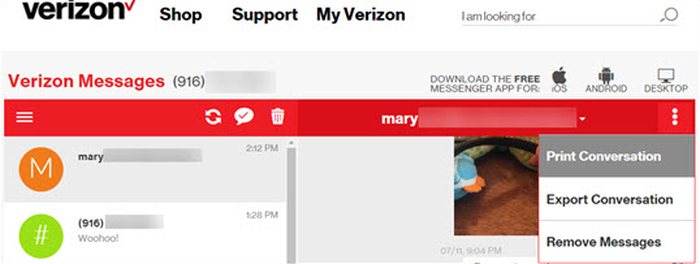
The problem with these systems is that they just don’t have the data to provide. They deliver SMS messages, and as such have basic data about them, but they know nothing about iMessages, RCS messages (which modern Android devices use), and they don’t know any device-related data, such as read times or support for attachments or embedded data. These network services often struggle with Unicode characters where non-English languages are used.
That’s not to say that this data is useless: it’s another proof point to demonstrate that a complete, printed record from another source is accurate, and law enforcement tends to warrant providers to provide it for this purpose.
Using iPhone Backup Extractor to get an accurate, forensic report of text messages
Back in 2008, I lost my phone's data and needed to get it back. That led to me building iPhone Backup Extractor, which is the gold standard of recovering iPhone data.
Apple’s iTunes software is free to all users, and it can be used to quickly create a forensically sound archive of an iPhone’s contents. iPhone Backup Extractor can then — with a single click — generate a fully accurate report of message histories from an iPhone or iPod. Not only that, but it supports a wide range of additional messaging apps, such as WhatsApp, can recover deleted messages better than specialist forensics tools, and has a free version available to generate reports from threads with four or fewer messages.
iPhone Backup Extractor has been used in legal proceedings and disputes around the world. The FBI? District Attorneys? Cybercrime Centres and elite anti-corruption police? They’ve all licensed our software, and we’ve even been endorsed by the Queen of England for our technology.
Saving your text message history in a portable, printable format is easy with iPhone Backup Extractor. Download and run it. Open the "Preferences" dialog and make sure "Forensics mode" is checked. It’ll show you a summary of the number of messages you have in each of your messaging apps. If you then click the messaging app’s icon, iPhone Backup Extractor will generate a PDF of your message histories — with deleted messages include — in a clear, incontrovertible format.
Not only that, but our support team will do their best to help you through the process, and even jump on a screen-share with you to guide you through it if you get stuck.
Comparison of text message printing techniques
Here’s a handy comparison table of our approaches to printing texts:
| Need | Phone screenshot | Messages app | Network | iPhone Backup Extractor |
|---|---|---|---|---|
| Unambiguous times | ❌ | ❌ | ✅ | ✅ |
| Received & read times | ❌ | ❌ | ❌ | If available |
| Attachments, special characters & non-English | ✅ | ✅ | ❌ | ✅ |
| Clear sender & recipient details | ❌ | ❌ | ✅ | ✅ |
| Tamper-proof format | ❌ | ❌ | If obtained with warrant | ✅ |
| Third-party messages (WhatsApp, etc.) | ✅ | ❌ | ❌ | ✅ |
| Portable, printable PDF format | ❌ | ❌ | ❌ | ✅ |
We’re also able to provide statements to legal professionals on the process used to recover and present the data, and to independently verify a record of messages, and we have done so on many occasions.
Learning more about printing text messages and the law
As we stressed earlier: Reincubate isn’t a law firm, and we can’t give legal advice. You’d need to see a lawyer for that. There are a few resources around online that can be quite helpful for picking up a bit of background and helping you ask the right questions, however.
If you’re in a dispute, both parties should be aware that wiping a phone or deleting texts ahead of a legal hearing could lead to a felony charge in the US, and could cause similar trouble in the UK.
- “Can a text message conversation be used as evidence in a court of law” — Quora, via a number of US lawyers
- “Beware of fake text message evidence" — Dallas Divorce Law Blog, via O’Neil Wysocki Family Law
- “How to prove who sent a text message” — Avvo legal directory, via an MA litigation lawyer
If you get stuck or need assistance with extracting and printing your texts, please reach out to our support team. We’ll be happy to help.
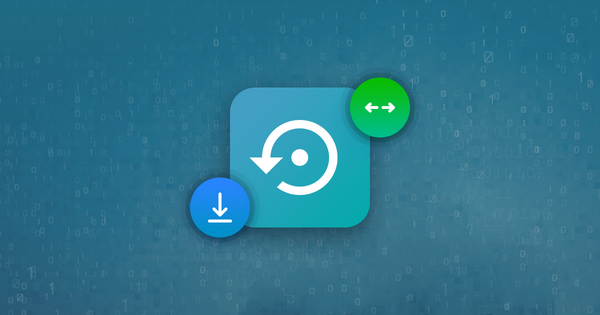

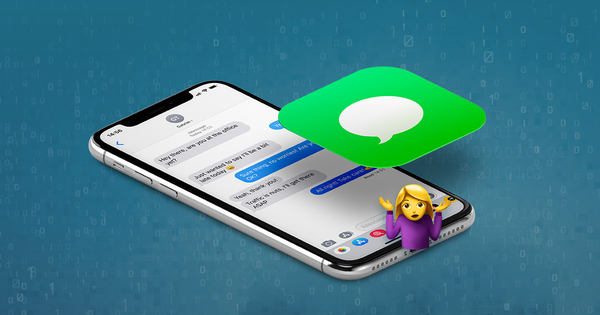
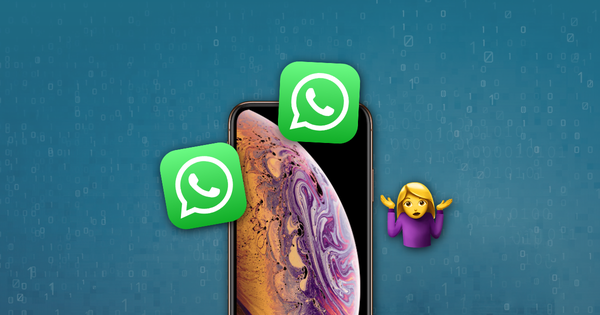
by Kathleen
Hi just wanted to thank you for the information in retreiving my boys phone messages fron his I phone
reply by: Reincubate Support
Thank you!